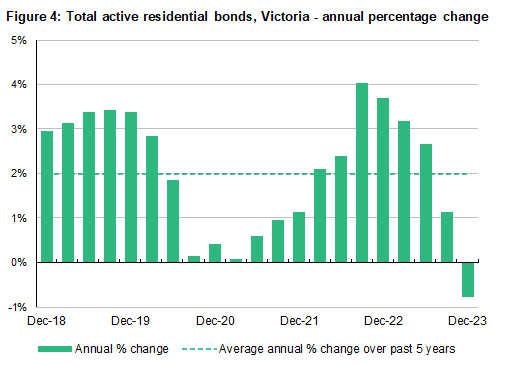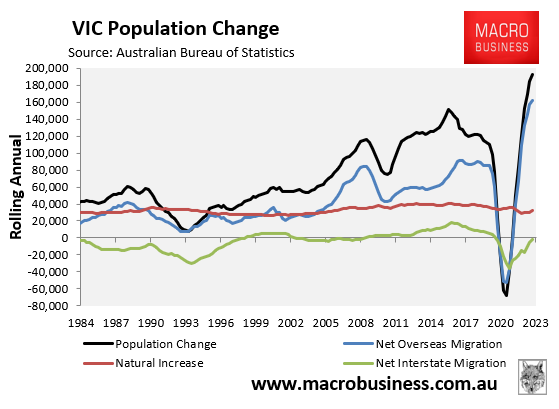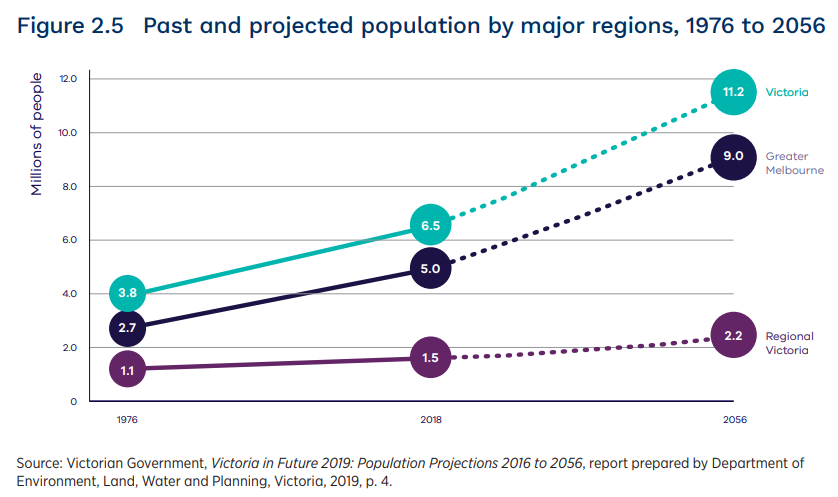Victoria has the lowest proportion of social housing in Australia, accounting for only 3% of total homes.
That is far lower than the national average of 4.2%, which is already low by worldwide standards.
Last month, The Guardian reported that Victoria’s homelessness crisis is the worst in the nation and continues to deteriorate.
“Victoria still has the lowest proportion of social housing out of all states and territories, and the public housing waitlist was 60,708 applications long in December”, The Guardian’s Inequality reporter Cait Kelly wrote.
“At the last census, 30,660 people were recorded as homeless, about five times the national average”.
Meanwhile, the latest Homes Victoria Rental Report for the December quarter of 2023 revealed that Victoria recorded a fall in active rental bonds, meaning that the overall supply of rental homes across the state shrank:

Source: Homes Victoria
The total number of active bonds held in Victoria was 669,640 on December 31, 2023, a decline of 0.8% on the size of the rental market in the same quarter of 2022.
This comes at the same time as Victoria’s population expanded by a record 193,000 over the year to September 2023:

The rental situation is so out of control that a new poll of more than 250 Victorian frontline homelessness workers, conducted by the Council to Homeless Persons between March 28 and April 9, found that two-thirds were turning away more people from their service than a year ago.
“Our team is having to deliver a very harsh reality to consumers on a daily basis: if you’ve just become homeless and can’t access a rental, you’ll wait years for social housing”, one frontline worker said.
Another source stated that people are forced to choose between sleeping rough or returning to violent relationships to keep a roof over their heads.
Average wait times increased from just over a year in 2020-21 to 15 months in 2021-22 and 18 months in 2022-23.
“Getting access to social housing is near impossible”, another worker said.
“The waitlist is so long that even Victoria’s most vulnerable cannot access housing”.
The crisis is taking a toll on frontline workers, with 55% of those polled considering leaving the specialist homelessness sector within the last six months.
Victoria’s population has grown by 2.2 million people (47%) this century, with a NOM of 1.4 million.
According to the state government, this rapid population expansion will continue indefinitely.

Victoria’s population is projected to increase from 6.5 million in 2018 to 11.2 million by 2056.
Melbourne’s population will increase from 5.0 million in 2018 to 9.0 million by 2056.
The vast bulk of Victoria’s population growth will come from net overseas migration:

Victoria’s homelessness problem will never be solved as long as the population grows faster than the provision of housing and support services.
With the state’s population expected to increase like an out-of-control lab experiment due to colossal immigration, thousands more Victorians will be forced to live in insecure housing or on the streets.

